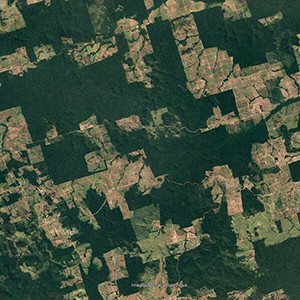NORMAN—A University of Oklahoma-led study generated improved annual maps of tropical forest cover in the Brazilian Amazon in 2000-2017 and provided better characterization on the spatio-temporal dynamics of forest area, loss and gain in this region. The Amazon basin has the largest tropical forests in the world. Rapid changes in land use, climate and other human activities have resulted in substantial deforestation in the Brazilian Amazon over the past several decades.
“Monitoring, verification and reporting of tropical forest dynamics in the Brazilian Amazon have been a critical but challenging task for the research community and society-at-large. Available maps of tropical forest cover in the region have large uncertainty. In 2015, we assembled an international team from the United States, Brazil and China to tackle the challenging problem,” said Xiangming Xiao, George Lynn Cross Research Professor, Department of Microbiology and Plant Biology, OU College of Arts and Sciences.
“The international team used both optical and microwave images acquired by satellite-based sensors and advanced algorithms to improve annual maps of tropical forests in the Brazilian Amazon during 2000-2017,” said Yuanwei Qin, lead author for the study and research scientist, Center for Spatial Analysis, OU College of Atmospheric and Geographic Sciences.
The estimates of tropical forest area in the Brazilian Amazon from this study were ~15% higher than estimates from the PRODES forest dataset that has been widely used in research communities. This study also reveals a renewed increase of tropical forest area loss after 2013, driven in part by land use change and strong El Nino in 2015/2016. The findings from the OU-led study could have significant implications for land-use policy, forest management and conservation, terrestrial carbon-cycle, hydrology and climate.
The OU-led study, “Improved Estimates of Forest Cover and Loss in the Brazilian Amazon in 2000-2017,” was published in Nature Sustainability on July 29, 2019 (https://www.nature.com/articles/s41893-019-0336-9). This research was funded with grants from the NASA Land Use and Land Cover Change Program (Grant No. NNX14AD78G), NASA Geostationary Carbon Cycle Observatory Mission (Contract No. 80LARC170001), the Inter-American Institute for Global Change Research (Grant No. CRN3076), which is supported by the National Science Foundation (Grant No. GEO-1128040), and NSF EPSCoR (Project No. IIA-1301789). For more information about this project, please contact Professor Xiao at xiangming.xiao@ou.edu.



